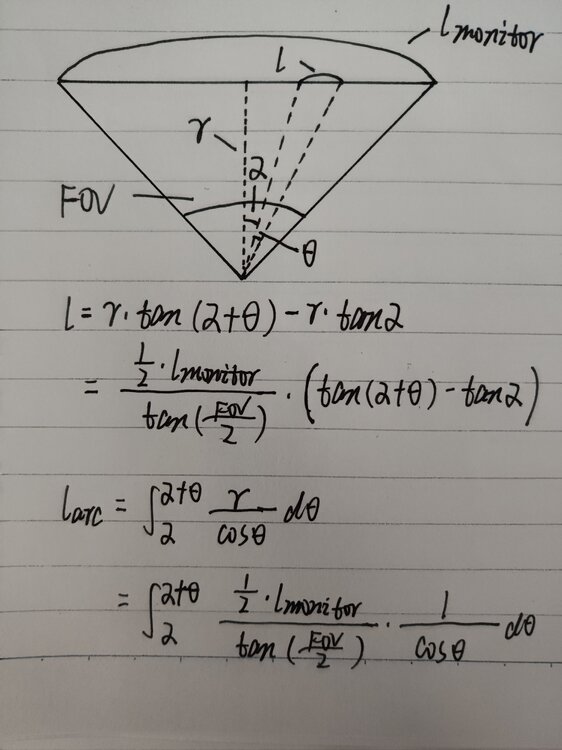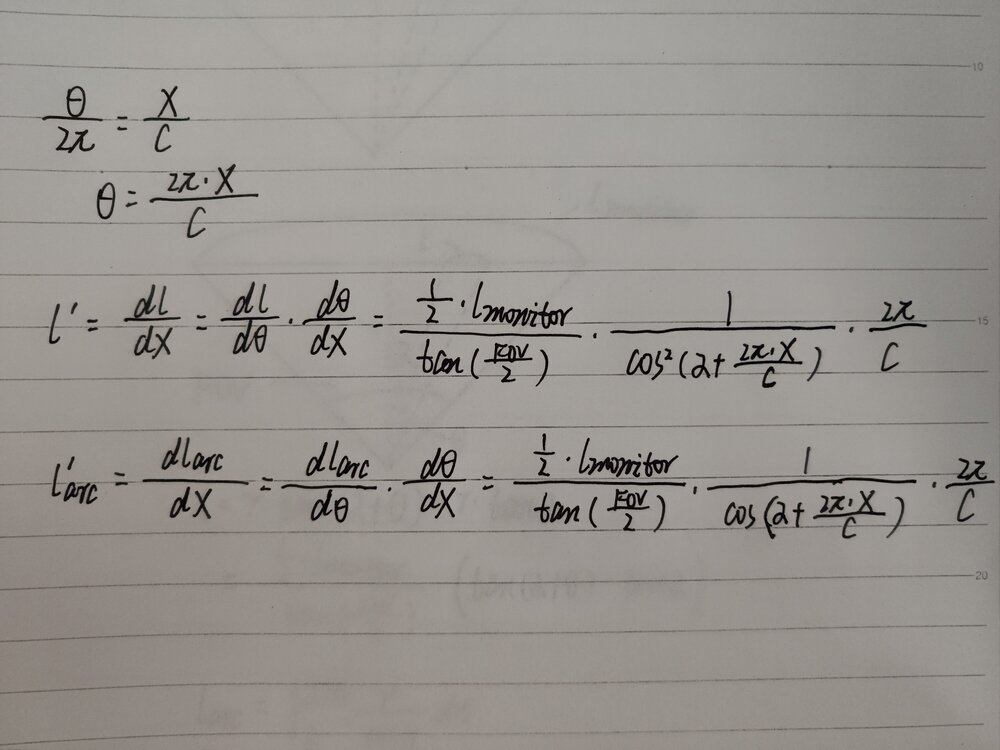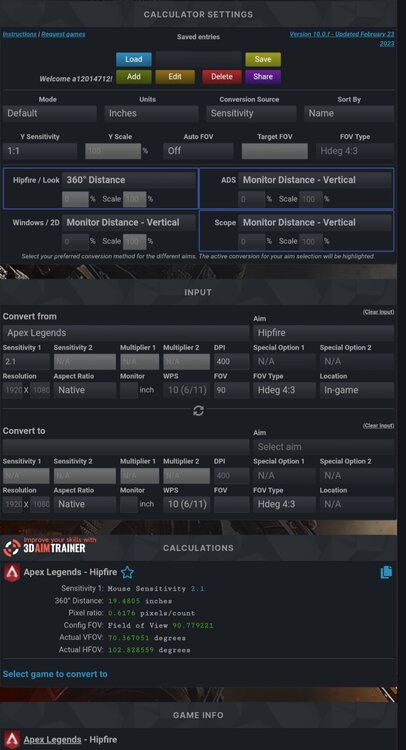-
Posts
17 -
Joined
-
Last visited
Recent Profile Visitors
The recent visitors block is disabled and is not being shown to other users.
Weix's Achievements
-
 Mssadg reacted to a post in a topic:
Add something about the sensitivity conversion way of MDH(MDV)
Mssadg reacted to a post in a topic:
Add something about the sensitivity conversion way of MDH(MDV)
-

Add something about the sensitivity conversion way of MDH(MDV)
Weix replied to Weix's topic in Technical Discussion
I have a general understanding of the sigmoid function. The logistic function can be applied in many places. Now I want to apply it to MDD. The values of L, k, and x0 need to be determined. To make them meaningful, just Things like monitor distance, limit, and power must have purpose and practical significance. I haven’t figured out the content of this aspect yet, and I still need to learn. Your calculation formula is a reference for me, thank you. -

Add something about the sensitivity conversion way of MDH(MDV)
Weix replied to Weix's topic in Technical Discussion
Is this working to show the results of the various sensitivity conversion ways? For example, if I use MDH to get a result, what result will it be expressed in other sensitivity conversion methods? Is this the case?If so, it is indeed a big project, I am looking forward to it, because I can see more parameters, so it is more clear. -

Add something about the sensitivity conversion way of MDH(MDV)
Weix replied to Weix's topic in Technical Discussion
The calculation formula for instantaneous speed created by myself is really not very easy to understand, so I take it as another angle to determine the Zoom sensitivity Multiplier.,just use it as a supplement. Most people understand monitor distance on it. I'm sorry, I don't have a better way. I still lack knowledge in this area. If I have time, I will add relevant knowledge. After all, I also want to find more and better solutions. However, I think your solution is already perfect, and I think the others are just starting from other angles, and there may not be much qualitative improvement. Then, I am looking forward to the work of DPI Wizard. Another point, in fact, I think the sensitivity conversion formula is more of a prediction for all zoomsensitivity multipliers. You can determine several zoomsensitivity multipliers first, and then use these determined values to determine the final sensitivity conversion formula. Just like determining the limit and Power in MDD, in my opinion, the sensitivity conversion formula is an auxiliary, it helps you predict and determine the zoomsensitivity multiplier that you have not practiced, and can get closer to the ideal zoomsensitivity multiplier faster. -

Add something about the sensitivity conversion way of MDH(MDV)
Weix replied to Weix's topic in Technical Discussion
The purpose of this conversion method is that the instantaneous movement speed of the same monitor distance in HIPFOV and ZOOMFOV is the same, which means that in HIPFOV and ZOOMFOV, at the same point on the display, at the moment when the mouse starts to move,the point on the monitor moves at the same speed in HIPFOV and ZOOMFOV. Another point is that in MDD (v(l)) and MDD (v(arc)), when the value of the display distance is 0, the calculation formula is the same as that of MDH 0%, as mentioned in the previous post In that way, I want to unify, more precisely, systematize. Another point, how to determine their own sensitivity conversion value (in fact, to determine the value of limit and Power), I have a small suggestion, is to try to determine their own sensitivity conversion value in the larger ZOOMFOV and the sensitivity conversion value in the smaller ZOOMFOV, so that you can get two equations, solve for limit and Power.Below I attach a general reference. https://www.desmos.com/calculator/1rsicsvgza? -
I want to add something about the sensitivity conversion way of MDH(MDV).The monitor distance and the corresponding mouse movement distance are involved in MDH (MDV),but there is one more parameter that is ignored,that's the speed at which a point on the display moves. Analogous to speed, time, and displacement, the moving distance of the mouse is time,the distance of the monitor is displacement,The speed at which a point is moving is the velocity.First, the calculation formula for the distance of the display can be obtained,then the expression for the instantaneous velocity of movement at this point is the derivative of the displacement.In addition to the monitor distance, there is another kind of displacement expression,which is the sum of the arc length corresponding to a certain point moving a certain distance(denoted as l(arc)).Here is an explanation of why it is a certain point on the display, not the center point,because the center point is always at the center, of course this is nonsense, but because it is always at the center,when the sensitivity is determined, the speed of the center point remains unchanged.What we are going to discuss is the speed of each point on the display. Therefore,we cannot only take the center point (or front sight) as the analysis object.Another important point is that in the process of aiming, we should pay more attention to the target,rather than the front sight at the center point, so the target point is more valuable for discussion.Another point is that my analysis here is based on HFOV. Of course, there is no problem with VFOV, but when it is applied to a specific game, it is necessary to distinguish between HFOV and VFOV. I have made this mistake before.If it is not calculated in a specific game, there is no need to divide HFOV and VFOV, there is no difference between the two,and it can be considered as just two FOVs of different sizes. X means that the front sight rotates a certain angle, and the mouse moves the distance. C means the distance that the mouse moves when the front sight rotates for one circle. In this way, the MDH used by the website is obtained under the condition that the display distance is equal and the corresponding mouse movement distance is equal.There are two other cases. The first case is the ratio of sensitivity obtained when the display distance is equal and the corresponding target point moving speed is equal.The second case is obtained when the moving speed of the target point is equal and the corresponding mouse moving distance is equal. Sensitivity Ratio.According to my own calculations, the calculated results in the second case will make the sensitivity ratio too large,and the monitor distance cannot be taken from 0% to 100%, so use the method currently used by the website and the first method.In addition, the idea of MDD is very good, so I will borrow the method of TheNoobPolice,add the idea of dynamic monitor distance.In fact, a in the formula will change with the value of zoomfov.The final formula is in the following website, and I only learned about it because of TheNoobPolice, I am really grateful to him. https://www.desmos.com/calculator/tkzyfeh3cd? Because I am Chinese, my English is not good, so I can only use a translator, so please forgive me if I have trouble reading, thank you.
-

APEX's Hipfire FOV appears to have been misexpressed
Weix replied to Weix's topic in Feedback, suggestions and bugs
OK -

Need slightly more clarification on monitor distance matching
Weix replied to Kilroy's topic in Technical Discussion
Is the calculation done this way to match desktop speed? Looking forward to your reply,because I really want to know the idea of doing so. -

CS:GO FOV + SENS scalar script + keypresser (no macro)
Weix replied to Skidushe's topic in Technical Discussion
sensitivity 1.3 monitor distance % match ratio:56.25 fov_cs_debug 83 The result I calculated is 1.183508 I have calculated many times and validated my calculation method with the existing data. If the display distance matches, can you see if my calculation method is wrong? Computational formula:arctan(8*56.25%/(6/tan(83/2)))*1.3/arctan(8*56.25%/6) Display resolution ratio:16:9,so the screen length is calculated by 16, and half is 8. I am looking forward to your reply. -
Thanks for your reply.I can understand it. because it is converting from the first game to the second game.So the calculation to base on the first game, after all, to make the second game after the conversion and the first game all aspects of the data consistent,So computing with the first game data is more consistent with the user's original idea.
-

Need slightly more clarification on monitor distance matching
Weix replied to Kilroy's topic in Technical Discussion
”the perfect sensitivity to match the desktop pointer speed“,does this statement indicate the speed of the matching desktop pointer?Because I want to know the process of thinking of this method, so I look forward to your reply. -

Need slightly more clarification on monitor distance matching
Weix replied to Kilroy's topic in Technical Discussion
Is this calculation done to match desktop speed? -
Thanks,i understand roughly.It is based on the first game, which make computing unified and not chaotic.But i still think it's more accurate to base on the second game, because the FOV settings for the two games may not be the same.
-
-
In battlefield 1, when 16:9 resolution is VFOV, it is 74, and the actual horizontal angle of view is only 90. Do they mix up 4:3 and 16:9's HFOV? In the previous versions, I measure horizontal vertical alignment distance (2D). The result is that the horizontal vertical measurement distance is not consistent. In the current version, the measurement error is ignored. It can be considered consistent, and the difference between previous measurements is more, so it is sure that the horizontal vertical moving distance of previous versions does not agree. The horizontal picture is stretched to 4/3 times the original image,In this way, the tan (horizontal rotation angle) needs to be changed to 3/4. If there is a previous version, it can be verified.




